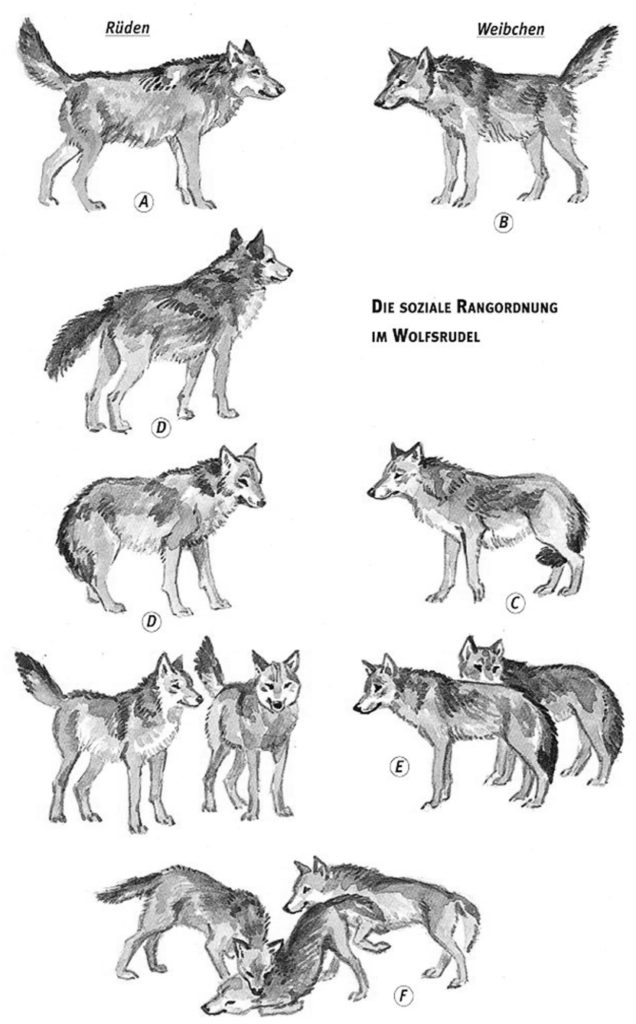Everyone adheres to this balance of forces - almost always. Because sometimes there are serious fights between two or more pack members. Two situations in particular can become critical: When it comes to the highest position in the hierarchy and when individual pack members become "whipping boys" and are to be driven out of the pack.
The first case is very rare. The two most senior in the pack, the alpha wolf and the alpha wolf (see middle text), support each other and thus prevent, that one of their descendants disputes their position.
But one day even the strongest wolf will become weak. The "Crown Prince" recognizes his chance and attacks; carefully at first, later more and more open and aggressive. Can't the old man defend himself against these attacks, there is finally a power struggle, which is a matter of life and death. The animals bite each other unrestrainedly. Often other animals also intervene, not least the alpha she-wolf. But she doesn't come to the aid of the alpha male, but the "Crown Prince". Together they furiously attack the old man, and if he can't escape at the end of the fight, he is bitten to death.
This behavior may seem cruel, but from the point of view of the alpha she-wolf and the other pack members, cs makes perfect sense. No one is served with a pack leader who is getting weaker and weaker, least of all the alpha wolf herself, who needs a strong partner for herself and her children. Someday she may feel the same way. Nature knows no compassion.
In the second case, the unrestrained attacks hit a particularly weak pack member. Most of the time it's a female, that has become sexually mature and is oppressed as a rival of the alpha female. The "youngsters" in the pack also like to take advantage of this, the A- to two-year-old wolves. They never miss an opportunity for argument and when attacking in a group, they are braver than alone and in the end can even drive the poor "whipping boy" out of the pack. Such outcast animals remain in the pack's tow for a while, but at some point they will go their own way.
 The hierarchy
The hierarchy
There are two ranks in a wolf pack, one for the males and one for the females. The alpha male is always at the top (Category) and the alpha she-wolf (B). Usually these are also the two oldest animals in the pack.
Since the alpha wolf does not tolerate any other sexually mature females in the pack next to her, there are mostly only young females (C) under her. The males, on the other hand, are more compatible with one another. It happens a lot, that among the alpha male there are more sexually mature males (D) stand, who take part in the common hunts and the rearing of the puppies.
After the adult animals, the one follows- up to two year olds, not yet sexually mature animals (E). Often they have a similar ranking among each other, as it applies to the entire pack. They have a "small alpha male" and a "small alpha female".
At the bottom of the ranking, actually a bit outside, stand the puppies (F).